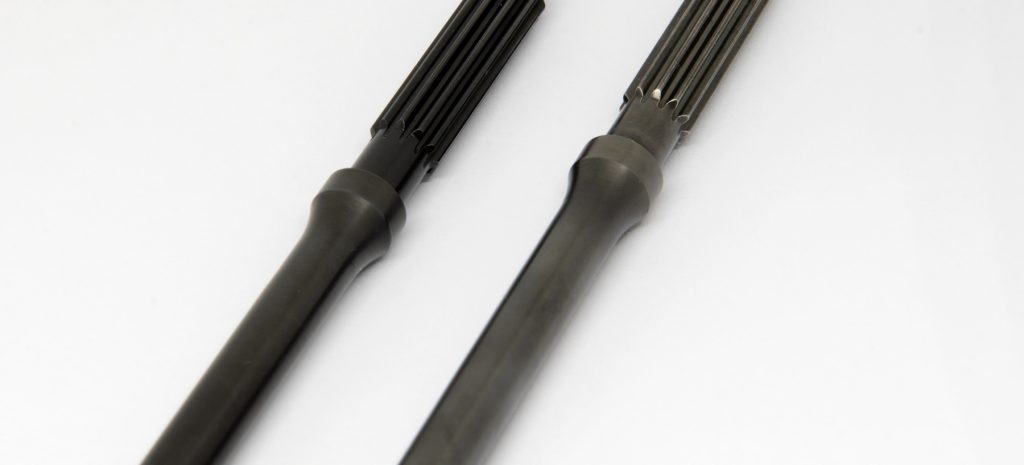Why does nitriding increase the hardness of steel?
Nitriding is a case hardening process for metals. During the nitriding process, nitrogen atoms will diffuse into the gaps in the crystal lattice of the metal surface, so that the crystal lattice is not easy to slide and form a hardening surface. The wear resistance, surface hardness, fatigue limit, and corrosion resistance of steel parts after nitriding will be increased.
Nitriding is commonly used in low-carbon steels and low-alloy steels that are cheap and easy to process so that they can have some surface characteristics of higher-priced and difficult-to-process steels. The surface hardness after nitriding ranges up to HRC 50 to 60 plus. It can also be used on medium carbon steel or high carbon steel, alloy steel containing titanium, aluminum, molybdenum, etc. for some components or molds with high-strength and high wear resistance applications.
The aluminum, chromium, vanadium, and molybdenum elements in the traditional alloy steel materials will form stable nitrides when they come into contact with the nascent nitrogen atoms at the nitriding temperature. In particular, molybdenum not only acts as a nitride-forming element but also reduces the brittleness that occurs at the nitriding temperature.
Generally speaking, if the steel contains one or more nitride-forming elements, the effect after nitriding is relatively good. Among them, aluminum is the strongest nitride element, and nitriding with 0.85 to 1.5% aluminum has the best results. As for chromium steel, if there is enough chromium contained, good results can also be obtained. If the steel is not containing alloy elements, the nitrided layer is very brittle and easy to peel off, so it is not suitable to be nitriding steel.
What nitriding steels are commonly used?
The commonly used nitriding steels are as follows:
1. Low alloy steel containing aluminum (standard nitrided steel), such as medium carbon chromium-molybdenum aluminum steel 38CrMoAl
2. SAE 4100, 4300, 5100, 6100, 8600, 8700, 9800 series of medium carbon low alloy steel containing chromium.
3. Hot work die steel (containing about 5% chromium): SAE H11 (SKD 6), H12 (SKD 62), H13 (SKD 61)
4. Ferritic and martensitic stainless steel SAE 400 series
5. Austenitic stainless steel SAE 300 series
6. Precipitation hardening stainless steel SAE 630 (17-4PH), SAE 631 (17-7PH), A286, etc.
Standard nitrided steel containing aluminum can obtain a high hardness and high wear resistance surface layer after nitriding, but its hardened layer is also very brittle. On the contrary, chromium-containing low-alloy steel has a lower hardness, but the hardened layer is tougher, and its surface also has considerable wear resistance and concentricity resistance. As for tool steels such as H13 (SKD 61) D2 (SKD-11), they have a high surface hardness and high core strength. Therefore, when selecting materials, you should pay attention to the characteristics of the materials and make full use of their advantages to meet the functions of the parts.
You can find the photo display of the CNC machining parts made by us HERE!

